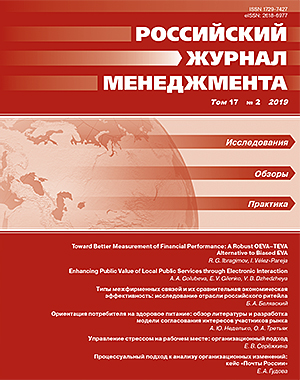Toward better measurement of financial performance: A robust OEVA–TEVA alternative to biased EVA
DOI:
https://doi.org/10.21638/spbu18.2019.201Аннотация
We demonstrate analytically and illustrate with examples that the conventional measures of the residual operating income such as the Economic Value Added (EVA) are biased by design and so may yield a misleading assessment of financial performance. Fundamentally, the magnitude of the measurement error depends on the amount of realized interest tax shields and the book to value ratio. Other potentially significant sources of distortions induced by the EVA design are identified as well. We propose a robust alternative that is a concurrent evaluation of the firm’s operating and total performance by means of two related metrics, the Operating EVA (OEVA) and the Total EVA (TEVA). Coherent implementation of the OEVA–TEVA technique is simpler than the EVA both analytically and computationally. It is also able to provide additional information for the management decision making. The overall consistency of the OEVA–TEVA approach is supported by a formally proved equivalence of the corresponding OEVA–TEVA valuation model to the fundamental valuation by the cash flow discounting.
Ключевые слова:
financial performance measurement, operating EVA, total EVA, economic value added, market value added, valuation
Скачивания
Библиографические ссылки
REFERENCES
Загрузки
Опубликован
Как цитировать
Выпуск
Раздел
Лицензия
Статьи журнала «Российский журнал менеджмента» находятся в открытом доступе и распространяются в соответствии с условиями Лицензионного Договора с Санкт-Петербургским государственным университетом, который бесплатно предоставляет авторам неограниченное распространение и самостоятельное архивирование.





